Winterberry, Ilex verticillata

The poetry of earth
Is in my blood.
A sense of beauty
Pours through my body
With a rhythmic flow
As the sure seasons come and go…
-M. P. Montpelier
Some people may be familiar with our evergreen hollies, found in the genus Ilex, such as American holly, Ilex opaca, English holly, Ilex aquifolium, or Longstalk holly, Ilex pedunculosa. But, on a cold day in December, one of our seasonal joys to brighten your day, and our landscape, is the Winterberry, Ilex verticillata. These native, deciduous, holly shrubs may grow 6 to 10-feet (15) in height, with an equal spread in width. At this time of year, some of them are unmistakable landscape celebrities, displaying abundant, bright-red, berries upon their leafless stems, literally brightening winter’s early arrival. We say some of the Winterberries are brilliant, because these, as are all hollies, are dioecious, which means there are distinctly male and female flowers, only found on separate plants. The male flowers producing pollen, the female flowers, if successfully fertilized, producing the fruit, which contains seeds for the next generation. These fruits will also provide valuable food for numerous species of birds, at a time with fewer food choices for them. Fruit-laden, Winterberry cut-stems are also prolifically used for indoor and outdoor holiday decorations.
The author, botanist, Henry David Thoreau (1817-1862) repeatedly documented in his journals Winterberry observations, which were later included, when published in 1906 as, The Journal of Henry David Thoreau. On his entry for November 8, 1857 he stated, “These are appointed to be ornament of this bare season between leaves and snow.” On his entry for January 1, 1853, he recounted, “I saw a [Winterberry] bush full of large berries, by the wall in Hubbard’s field. Standing on the west side, the contrast of the red berries with their white incrustation … was admirable. I thought I had never seen the berries so dazzlingly bright. The whole north side of the bush, berries and stock, was beautifully encrusted. And when I went round to the north side, the redness of the berries came softened through and tingeing the allied snow-white bush, like an evening sky beyond. These adjoined snow or ice berries … with those icy prickles or specula, between which the red glow and sometimes the clear red itself appeared, gave the appearance of a raspberry bush full of over-ripe fruit.”
Whether keeping a nature journal or not, on your next visit to Mount Auburn, look for some of our female, fruiting, Winterberries on Pheasant Path, Lavender Path, Poppy Path, and/or Pond Avenue, among other locations.
At Christmas I no more desire a rose
Than wish a snow in May’s new-fangled shows,
But like of each thing that in season grows.
–Shakespeare
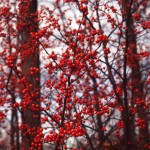
…It lifts existence on a plane of snow
One level higher than the earth below,
One level nearer heaven overhead,
And last year’s berries shining scarlet red…
-Robert Frost
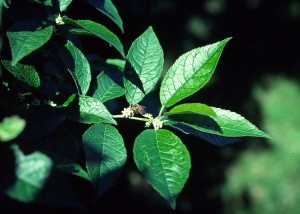
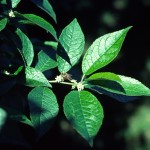
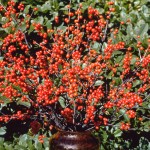

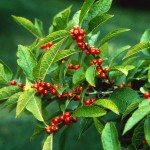
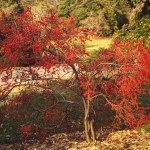
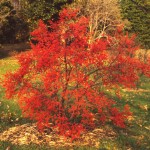
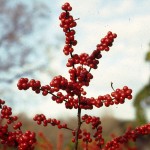
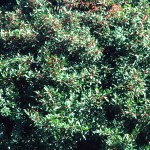
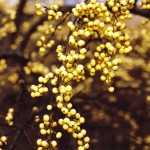
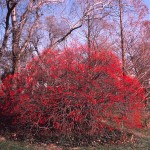
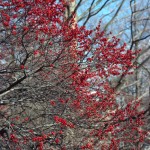
Leave a Reply to Jennifer Johnston Cancel reply